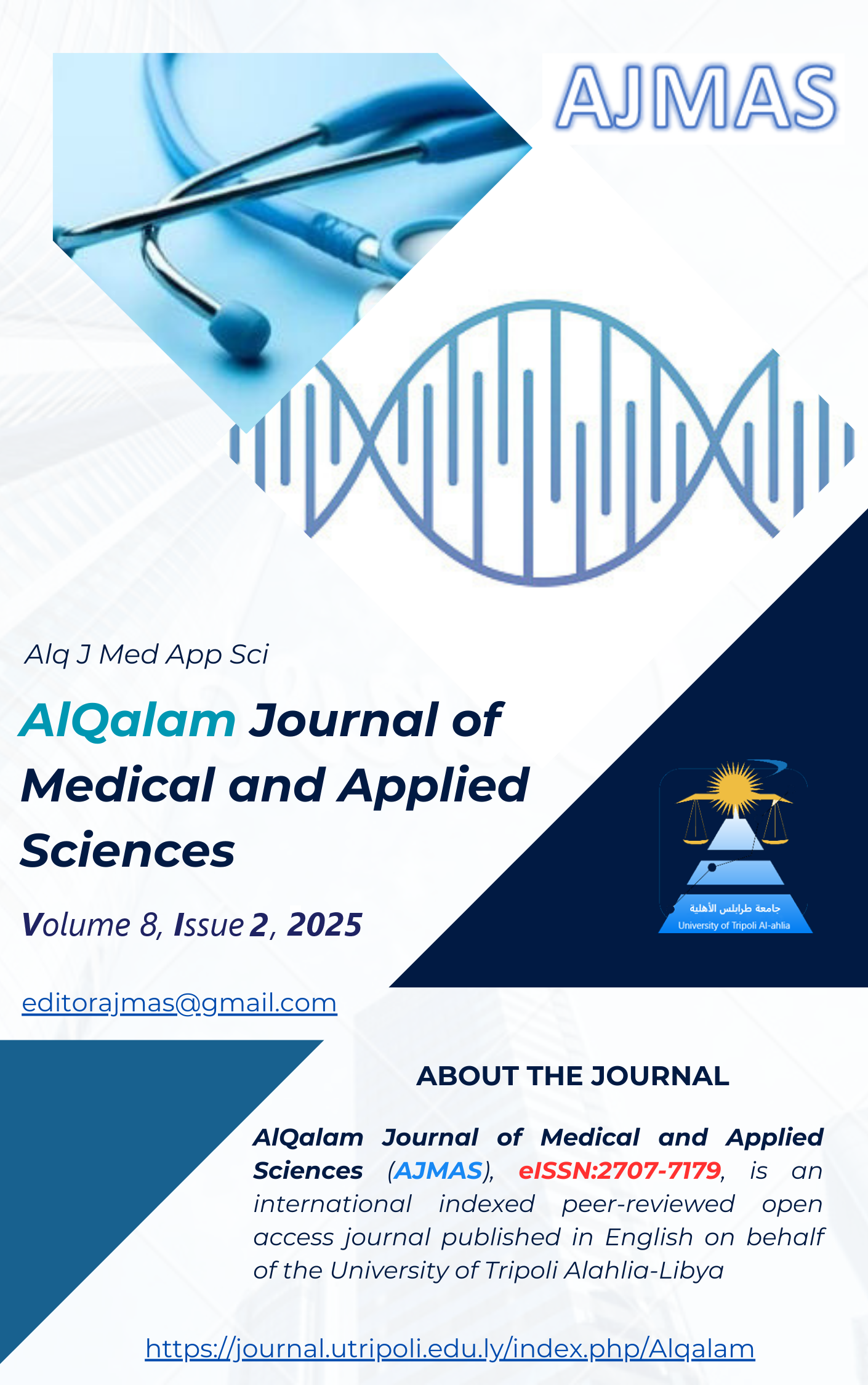Risk Factors Associated with A History of Falls Among the Elderly in Libya
DOI:
https://doi.org/10.54361/ajmas.258211%20Keywords:
Fall Risk, Elderly, Activity of Daily Living, Falls Efficacy Scale International.Abstract
Falls pose a significant threat to independent living and contribute substantially to morbidity and mortality among older adults. This cross-sectional study investigated the multifactorial relationship between fall risk and daily activities, nutritional status, medication use, and medical history in 200 randomly selected Libyan individuals aged 60 and above. Data were collected using standardized instruments, including the International Physical Activity Questionnaire (IPAQ), Falls Efficacy Scale International (FES-I), Mini Nutritional Assessment (MNA), and Activities of Daily Living (ADL) assessment. Statistical analysis, performed using SPSS v24, revealed significant associations (p > 0.05) between fall risk and several factors, including age, gender, medical history, physical activity levels, nutritional status, and ADL independence. These findings underscore the complex interplay of factors contributing to fall risk in the elderly Libyan population and highlight the need for comprehensive, multi-pronged interventions to mitigate this risk and improve quality of life.
Downloads
Published
How to Cite
Issue
Section
License
Copyright (c) 2025 Mahmoud Shtawa, Esraa Khalid, Amira Ben Said

This work is licensed under a Creative Commons Attribution 4.0 International License.














